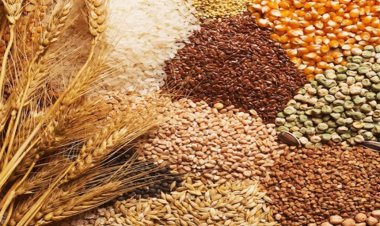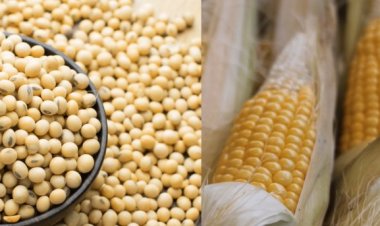Global Cereal Production Up, But Trade Forecast for 2024-25 Down to Lowest Level Since 2019-20
According to FAO's latest monthly report, the drop in forecast—down 5.3 million tonnes from March—reflects weakening demand and trade flows, particularly in coarse grains and wheat, while rice trade is expected to grow marginally.

The Food and Agriculture Organization (FAO) has sharply revised down its forecast for global cereal trade in the 2024/25 season, projecting it to fall to 478.9 million tonnes, a 6.7 percent decline from 2023/24 and the lowest level since 2019/20.
According to FAO's latest monthly report, the drop in forecast—down 5.3 million tonnes from March—reflects weakening demand and trade flows, particularly in coarse grains and wheat, while rice trade is expected to grow marginally.
Global cereal production in 2024 is now estimated at 2,849 million tonnes, up by 7.1 million tonnes from FAO’s previous estimate in March. Despite this upward revision, the figure remains 0.3 percent below last year's output.
The improved forecast stems largely from better-than-expected wheat harvests in Australia and Kazakhstan, as well as a modest increase in barley production in Australia. Global rice production for 2024/25 is forecast at a record 543.3 million tonnes, driven by increased planted area, particularly in India, with contributions from Cambodia, China, and Tanzania, offsetting weather-related declines in Bangladesh, Indonesia, and Myanmar.
Demand Rises, Coarse Grains Lead the Way
Global cereal utilization in 2024/25 is forecast at 2,868 million tonnes, 1.3 million tonnes higher than last month and 0.9 percent up from 2023/24. The increase is primarily due to a 2.7 million tonne rise in coarse grain usage, led by maize, barley, and sorghum.
Wheat utilization, however, has been revised downward by 1.4 million tonnes to 795.4 million tonnes, with the decline mainly reflecting lower-than-expected consumption in India. In contrast, rice utilization is projected at 539 million tonnes, a 2.1 percent increase, driven largely by per capita food consumption, now estimated at 53.3 kg/year. Notably, industrial uses of rice, particularly for ethanol production in India, are projected to surge by 17 percent.
Stocks: Coarse Grains Pull Global Cereal Reserves Down
Despite a 4 million tonne upward revision this month, global cereal stocks at the end of 2025 are projected to decline by 1.5 percent, reaching 873.3 million tonnes. The global stocks-to-use ratio is expected to fall to 30.1 percent, down from 30.9 percent in 2023/24.
The decline is primarily due to a 6 percent fall in coarse grain inventories, led by reduced maize stocks in China. Wheat stocks, however, are forecast to rise by 7.1 million tonnes to 320 million tonnes, with the bulk of the increase in India, Kazakhstan, and Russia. Rice reserves are also expected to hit a record 205.9 million tonnes, up 3.2 percent, as importing and exporting nations alike look to rebuild stocks.
Coarse Grains and Wheat Trade Face Sharp Contractions
The global coarse grain trade forecast for 2024/25 has been slashed by 3.7 million tonnes, now pegged at 224.2 million tonnes, marking a sharp 8.2 percent drop year-on-year. The revision reflects lower maize and sorghum purchases by China, as well as reduced Brazilian maize and U.S. sorghum exports.
Meanwhile, wheat trade is projected at 195 million tonnes, down 1.7 million tonnes from the previous forecast and a 7.2 percent fall compared to last season. The drop is driven by reduced exports from Kazakhstan and Russia, and smaller import volumes from China.
In contrast, global rice trade is expected to rise by 1 percent in 2025, reaching 60 million tonnes. Though imports from Indonesia, the Philippines, and Vietnam are set to decline, increased demand from Bangladesh, Madagascar, and Nepal is expected to offset the dip.
2025 Wheat Production Outlook Mixed
The FAO’s early forecast for 2025 wheat production remains stable at 795 million tonnes, broadly in line with 2024 figures. Production in the EU is forecast to rise by 12 percent due to favorable planting and yields, while continued rainfall deficits in eastern Europe present a downside risk.
The outlook for Russia and Ukraine remains cautious, with low soil moisture and the ongoing conflict likely to reduce yields. The U.S. may also see a production dip due to drought affecting winter wheat areas.
In India, production is forecast to rise to an all-time high of 115.4 million tonnes, driven by increased acreage and government support. Meanwhile, dry conditions in Iran and Türkiye threaten harvests, though irrigation access may buffer the impact.



 Join the RuralVoice whatsapp group
Join the RuralVoice whatsapp group









































